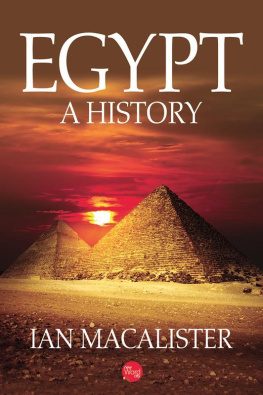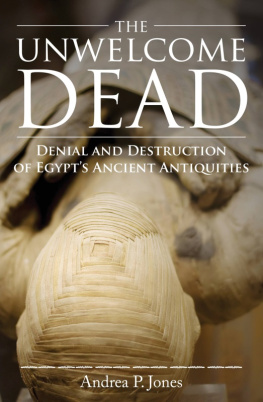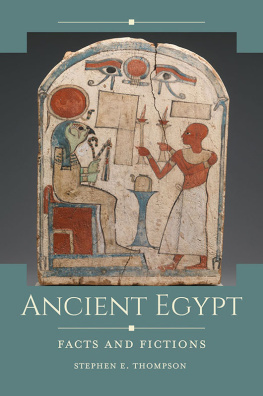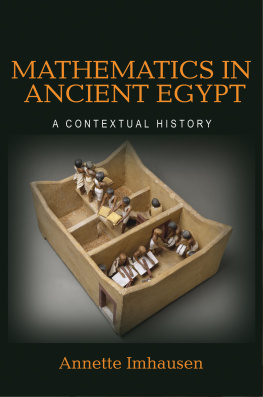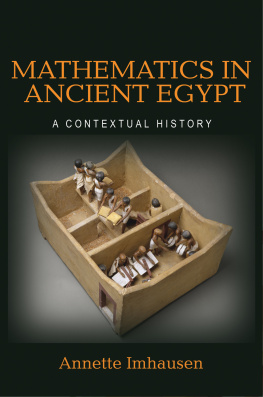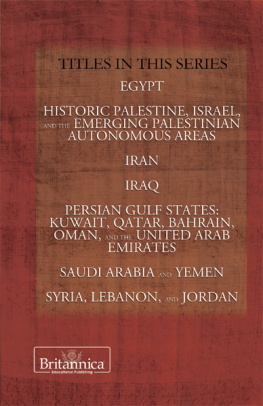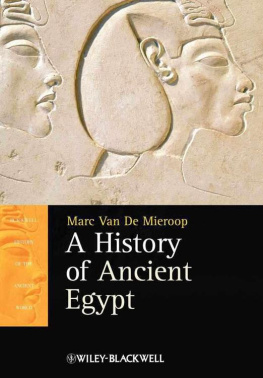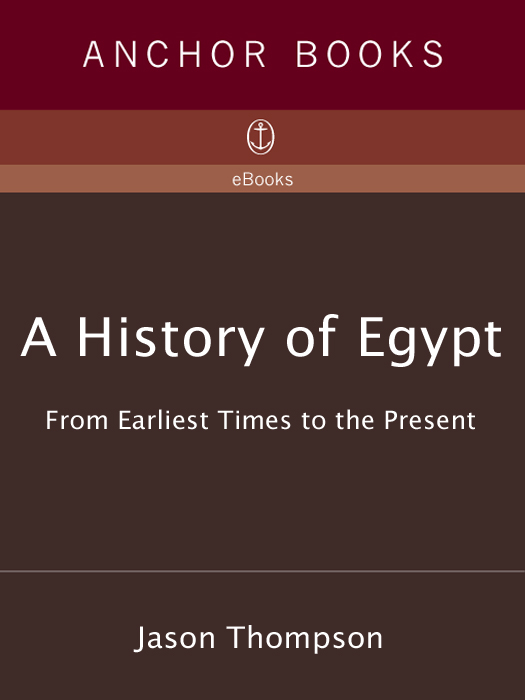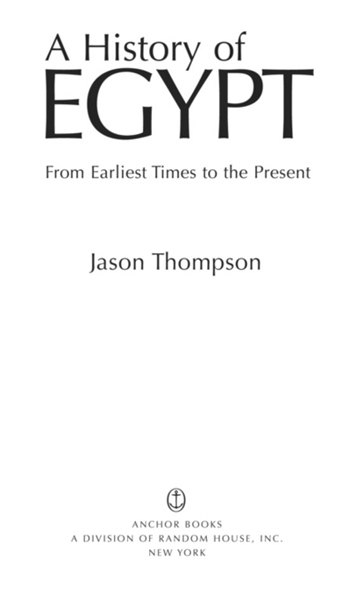Jason Thompson
A HISTORY OF EGYPT
Jason Thompson is the author of Sir Gardiner Wilkinson and His Circle and the editor of Edward William Lanes Description of Egypt and An Account of the Manners and Customs of the Modern Egyptians.
FIRST ANCHOR BOOKS EDITION, DECEMBER 2009
Copyright 2008 by Jason Thompson
All rights reserved. Published in the United States by Vintage Books, a division of Random House, Inc., New York, and in Canada by Random House of Canada Limited, Toronto. Originally published in hardcover in the United States by The American University in Cairo Press, Cairo and New York, in 2008.
Anchor Books and colophon are registered trademarks of Random House, Inc.
Maps on by Ola Seif.
The Cataloging-in-Publication Data is on file at the Library of Congress.
Ebook ISBN9780307784001
www.anchorbooks.com
v3.1_r1
To the memory of my Egyptian mother,
Zeinab Hassan Murgan
Contents
Acknowledgments
D uring the years that I have been involved with Egyptian history in one form or another I have benefited from friendship and collegiality with many scholars in almost every facet of the Egyptian past. That experience has enriched this book in myriad ways, and I am intensely grateful for it. I am particularly appreciative of Mark Linz, the director of the American University in Cairo Press, for suggesting that I write the book in the first place, then persevering when I initially declined, and to associate director Neil Hewison for encouraging me to take up the task. Valuable readers comments and corrections on all or parts of the manuscript were provided by John Ruffle, Muhammad Williams, Angela T. Thompson, Margaret Ranger, Neil Ranger, and Jill Kamil. Jaroslaw Dobrowolski and Michael Jones made major photographic contributions, as did Robert K. Vincent and John Feeney, who must be acknowledged in memory. I must also express my affectionate gratitude to my Egyptian familyBaba Ahmed, Habiba, Amna, and all the restwho allowed me to live among them in their house by the Mausoleum of Sultan Qaitbay in Cairo while I composed large portions of the book. With such valuable assistance and support, I have no valid excuse for the shortcomings that must attend a work of this scope.
Preface
U ntil quite recently, a one-volume survey of Egyptian history from the earliest times to the present by a single author was almost unheard of. There is an abundance of books about Egyptian historyEgypt is one of the most written-about lands in the world, an inexhaustible source of inspiration for writers and interest for readersbut they almost invariably concentrate on one particular period, as if the many phases of the Egyptian past are watertight compartments, hermetically sealed from each other. Yet few if any lands have as many threads of continuity running throughout their entire historical experience as Egypt. While the country has changed almost beyond recognition, one is repeatedly confronted by the paradoxindeed the outright contradictionthat many aspects of Egyptian culture have remained recognizably the same and can be documented across the millennia. Visible reminders of the full panoply of the Egyptian past are always available for ready reference.
Egypts recorded history is a little more than twice as long as those of England and France, both of which have been frequently treated in one-volume formats. But mere length itself is an obstacle that can be surmounted by selectivity and adjusting the depth of field. The rich variety of the Egyptian past, the subject of so many studies by highly specialized scholars, only makes it a more fitting subject for synthesis and comprehensive presentation.
The historiographical challenge was one of my motives for agreeing to write this book. Far from being superficial, some of the problems are extremely subtle. A comprehensive generalization is often more difficult to write than a detailed description. My objectives were also to address readers who want an introduction to the major epochs in Egyptian history and the elements of continuity and transition between them, and to supply travelers to Egypt with historical background to the places they visit. Accordingly, I have attempted to allot a reasonable amount of space and attention to the full range of Egyptian history, from prehistory until the near present. Hence, nearly half of the book is concerned with the periods before the Muslim conquest. A bit more space is devoted to the past two centuries, not because they are intrinsically more important but to bring the picture into sharper focus as it approaches the present, thereby emphasizing the connectedness of this moment to the totality of the Egyptian past. The detail then dissolves around the end of the twentieth century as recent history merges into current events.
Once inducted into the vast scope of Egyptian history, readers will inevitably be drawn more deeply into its many dimensions. Although this book pays some attention to society, culture, religion, economics, and other aspects of history, its organization is primarily political in order to maintain structure and present a coherent narrative. But political history is just one way of writing history; the reader is encouraged to delve into other approaches as well. The Recommended Reading section at the end is merely a brief list of suggestions, points of departure into a vast, varied, and endlessly fascinating literary universe. Above all, the reader is encouraged to be active, to be critical, to question and test generalizations. Egyptian history is a process in which everyone can participate, a game that anyone can play. The Egyptians have their past all around them, and they generously share it with those who read about it and who visit their country. Therefore those of us from abroad should bear in mind that Egyptian history is ultimately the property of the Egyptian people, past and present, and treat it with the respect, indeed the reverence, that it deserves.
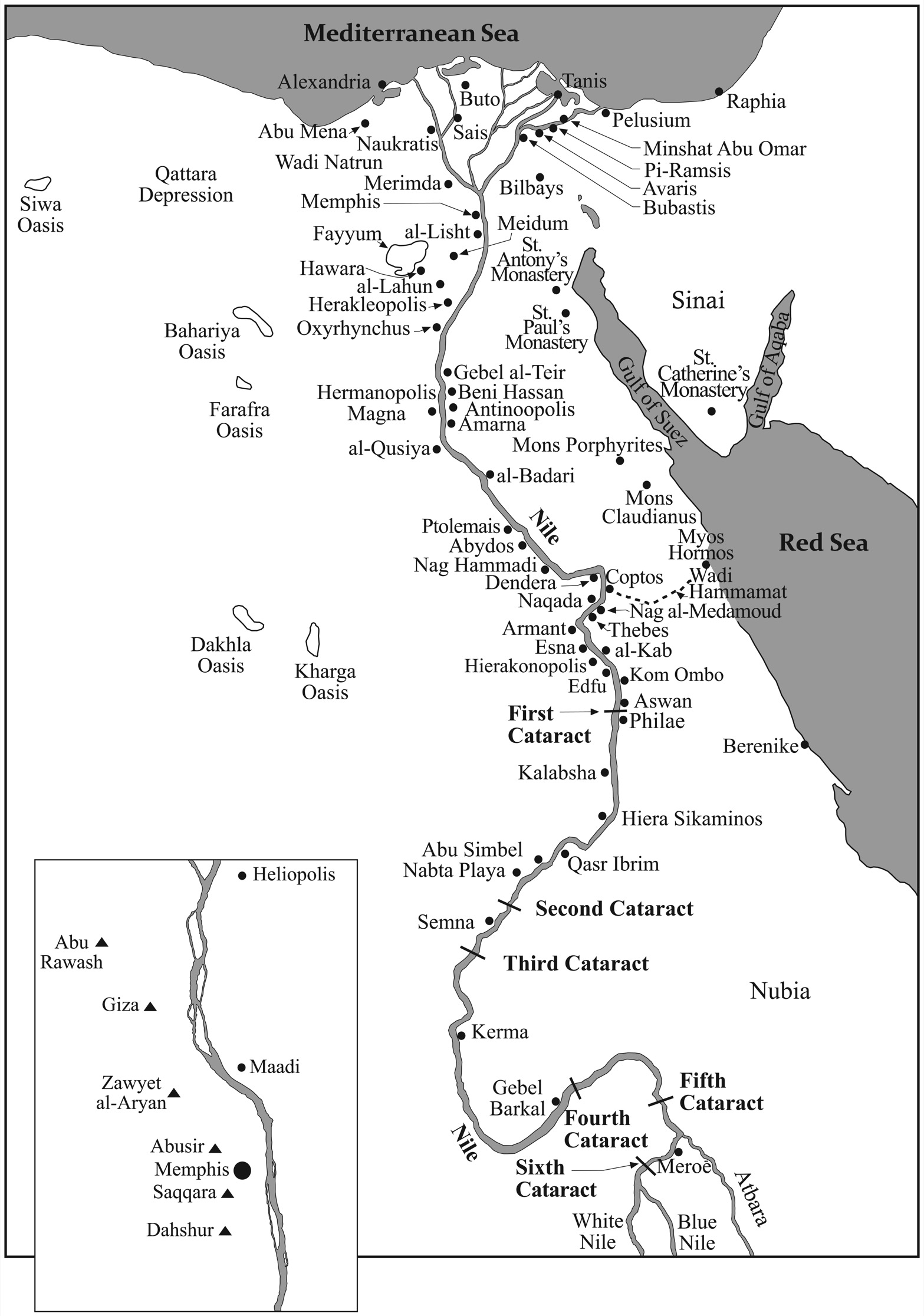
Ancient Egypt
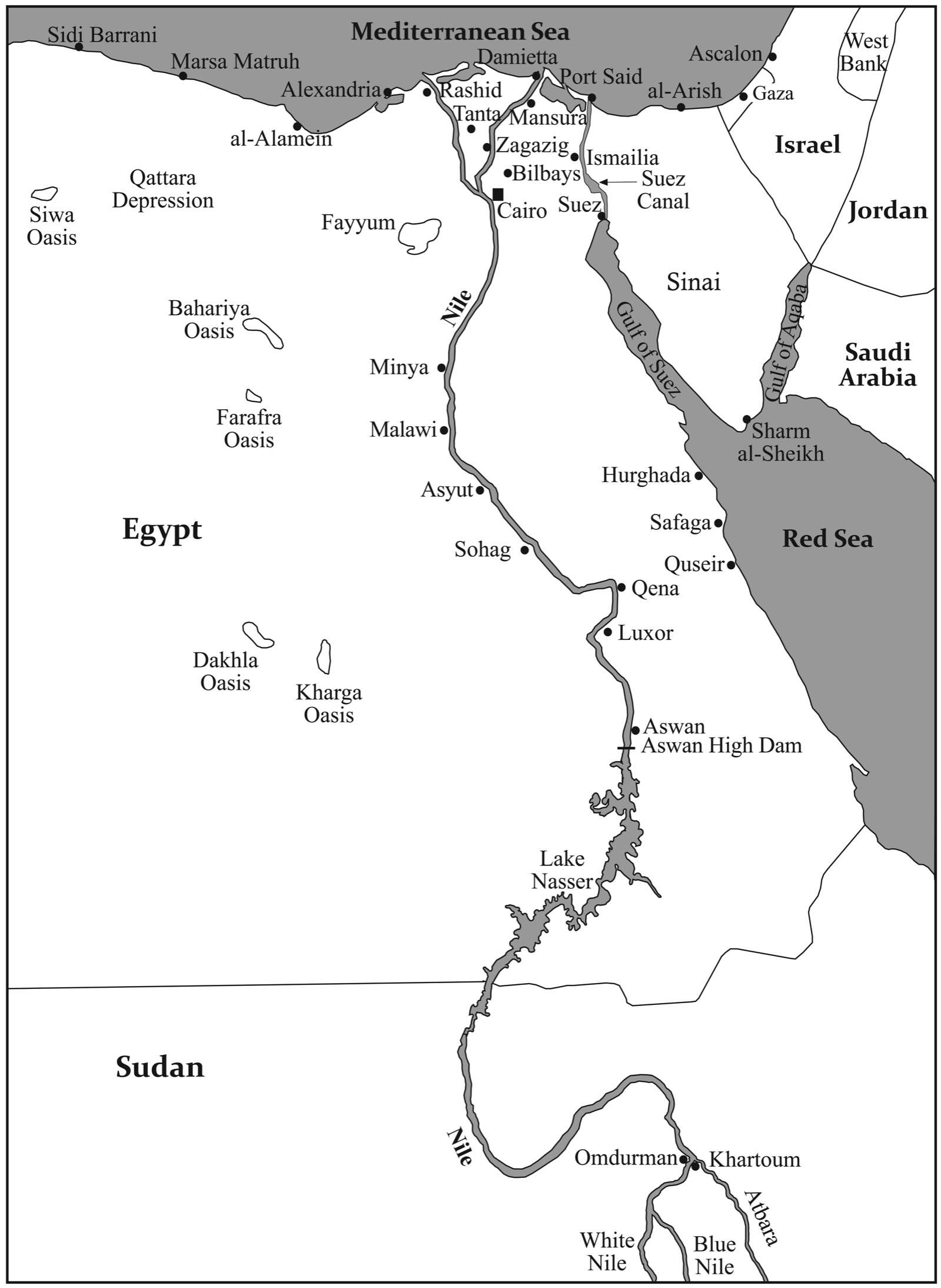
Modern Egypt
I will speak at length about Egypt because there is no other country like it, nor any that possesses as many wonders.
Herodotus
1 The Gift of the Nile
E gypt is readily recognizable on the map today as an angular wedge of northeastern Africa and a chunk of southwestern Asia. It covers slightly more than a million square kilometers, and at the beginning of the twenty-first century it was inhabited by approximately seventy-five million people. The capital of Egypt, Cairo, with its population of more than sixteen million, is the largest city on the African continent.
But to envision Egypt historically, and to understand its geographical essence, one must think first about the Nile, the longest river in the world, and a river that flows through the Sahara, the largest desert in the world. When the Greek traveler Herodotus described Egypt as the gift of the Nile in the fifth century BC , he was probably just repeating what was already a well-worn phrase, but one true since long before historical memory and no less so now. Rainfall is insignificant in the valley of the Nile, and not abundant in the Delta, so that virtually all of Egypts water comes from the Nile, and even with the amazing development during the past few decades of the Mediterranean and Red Sea coasts, 95 percent of the population of Egypt still live within a few miles of the river. Almost all of Egypts arable land, about 34,000 square kilometers, lies in the river valley and the Delta.




